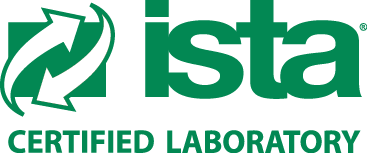Pharmaceutical Container & Closure Testing (CCIT Pharma Testing)
Pharmaceutical primary packaging containers such as bottles, vials, blister packs, squeeze tubes, and their closure systems must perform correctly to ensure the drug product is uncompromised during the distribution cycle and shelf life. Additionally, the end-user must be able to easily open the container, as designed, when ready.
The pharmaceutical industry and regulatory agencies have created dozens of requirements drug manufacturers and distributors must satisfy for the 510(k) submission and post-release production to ensure patient safety. The container system validation and qualification process may involve mechanical and environmental tests to achieve and demonstrate compliance.
For example, designers choosing an HDPE bottle with a twist-cap for liquid containment may need to ensure it remains leak-free with cap secured at various torque values while inverted in a low-pressure (high-altitude) shipping environment. Or the breakaway (slip or removal) torque may be of interest.
At some point in the package development process, Distribution Testing on the secondary and tertiary packaging layers may be performed to evaluate the package system’s integrity.
TYPES OF PHARMACEUTICAL CONTAINER AND CLOSURE TESTING
Leak test – Container closure leak tests can be performed using vacuum, gross leak, or bubble emission test methods, depending on the container and closure system design. Examples include containers with threaded or lug-style closures, vials, lids, caps, blister cards, and tamper-evident cap-and-tube systems.
Torque test – Many containers use a threaded cap or lid in the closure system. In such cases, the opening torque or torque release measurement can be evaluated. (Note: torque studies can provide useful data to resolve problems with leaking caps or seals.)
Altitude testing – Low-pressure (high altitude) testing is performed on containers in any orientation to study high altitude effects. Standard test methods and equipment are useful for evaluating all containment systems, especially liquid containers with threaded, twist-cap, or lug-style closures.
Extrusion or Ejection force – For tubes, syringes, and similar, a physical property of interest may be the force needed to expel the fluid. A variety of mechanical laboratory test methods are available to evaluate variations in fluid viscosity, or container type, for example.
Typical Procedures/Protocols
ASTM D3078
ASTM D4991
ASTM D5094
ASTM D6653
ASTM F88
ASTM F1886
ASTM F1980
ASTM F2096
WESTPAK Capabilities
(2) Cap Torque Testers with data output
(8) Bubble leak tanks with state-of-the-art controls
(9) Compression / Tensile Test Load Frames and test fixtures
(2) Temperature/Altitude Chambers
(1) Temperature/Vibration/Altitude Chamber
(4) Large, monitored Real-Time Aging Chambers controlled at +25⁰C
(23) Accelerated Aging Chambers with 108 m³ (3800 ft³) capacity and a variety of temperature levels
Accreditations:

Testing at Westpak has been accredited by A2LA to comply with ISO 17025.

Westpak testing labs are ISTA certified to perform a variety of tests.
